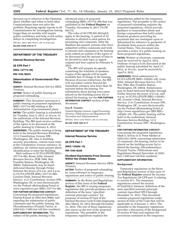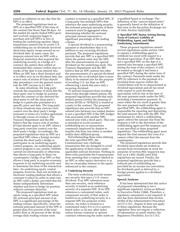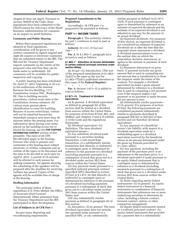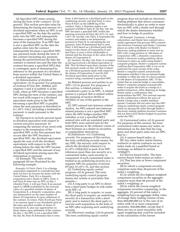Datasheet 搜索 > 热敏电阻 > VISHAY(威世) > NTCS0603E3202JLT 数据手册 > NTCS0603E3202JLT 其他数据使用手册 2/9 页

 器件3D模型
器件3D模型¥ 1.158
NTCS0603E3202JLT 其他数据使用手册 - VISHAY(威世)
制造商:
VISHAY(威世)
分类:
热敏电阻
封装:
0603
描述:
温度传感器
Pictures:
3D模型
符号图
焊盘图
引脚图
产品图
NTCS0603E3202JLT数据手册
Page:
of 9 Go
若手册格式错乱,请下载阅览PDF原文件

3203
Federal Register / Vol. 77, No. 14 / Monday, January 23, 2012 / Proposed Rules
regulations and § 1.871–16(b) of these
proposed regulations.
1. In General
Section 1.871–15(a) of these proposed
regulations treats a dividend equivalent
as a dividend from sources within the
United States for purposes of sections
871(a), 881, and 4948(a), and chapters 3
and 4 of subtitle A of the Code. As
prescribed by section 871(m)(2),
§ 1.871–15(b)(1) defines a dividend
equivalent as (1) any substitute
dividend made pursuant to a securities
lending or a sale-repurchase transaction
that is contingent upon or determined
by reference to the payment of a
dividend from sources within the
United States, (2) any payment made
pursuant to a specified NPC that is
contingent upon or determined by
reference to the payment of a dividend
from sources within the United States,
or (3) any other payment substantially
similar to such payments. The proposed
regulations specify that a payment is not
a dividend equivalent if it is determined
by reference to an estimate of an
expected (but not yet announced)
dividend without reference to or
adjustment for the amount of any actual
dividend.
For purposes of determining a
dividend equivalent, the term payment
includes any gross amount used in
computing any net amount transferred
to or from the taxpayer. For example,
the terms of a notional principal
contract (NPC) may provide for periodic
payments by each of the counterparties
that occur at quarterly intervals.
Because these payments may offset each
other, in whole or in part, the terms of
such contracts generally provide for
payment of only the net amount owed
between the counterparties (that is, the
difference between the amounts owed
between the counterparties). A dividend
equivalent is equal to the gross amount
that is contingent upon or determined
by reference to a dividend used to
determine a net amount, even if no net
payment is made or the party entitled to
a gross amount determined by reference
to a dividend is required to make a net
payment to the other contracting party.
Section 1.871–15(d) describes
payments that are considered
substantially similar to substitute
dividends made pursuant to securities
lending and sale-repurchase
transactions and to payments made
pursuant to specified NPCs.
Substantially similar payments are (1)
gross-up amounts paid by a short party
in satisfaction of the long party’s tax
liability with respect to a dividend
equivalent, and (2) payments calculated
by reference to a dividend from sources
within the United States that are made
pursuant to an equity-linked instrument
other than an NPC. The Treasury
Department and the IRS will continue to
monitor equity-linked transactions, and
may identify in separate guidance other
payments that are substantially similar
to a substitute dividend payment or a
payment made pursuant to a specified
NPC.
2. Definition of Specified Notional
Principal Contract
Section 1.871–16 defines the term
specified NPC for payments made after
March 18, 2012. Comments requested
that rules promulgated under section
871(m) rely on objective factors for
determining whether an NPC is a
specified NPC. The Treasury
Department and the IRS believe that the
proposed regulations address these
requests by providing objective rules
that will be administrable and that
identify NPCs entered into with the
potential for tax avoidance.
A. Transition Period
To provide taxpayers with the time
needed to implement withholding on
specified NPCs, temporary regulations
issued together with these proposed
regulations provide that the term
specified NPC will have the same
meaning as provided in section
871(m)(3)(A) for payments made prior to
January 1, 2013. Section 1.871–16(b) is
the same as the temporary regulations
accompanying this notice of proposed
rulemaking. Thus, § 1.871–16T(b)
applies to payments made on or after
March 18, 2012 and before January 1,
2013.
B. Definition Applicable to Payments
Made on or After January 1, 2013
Beginning on January 1, 2013, an NPC
generally will be a specified NPC for
purposes of section 871(m) if: (1) The
long party is ‘‘in the market’’ on the
same day that the parties price the NPC
or when the NPC terminates; (2) the
underlying security is not regularly
traded on a qualified exchange; (3) the
short party posts the underlying security
as collateral and the underlying security
represents more than ten percent of the
collateral posted by the short party; (4)
the term of the NPC has fewer than 90
days; (5) the long party controls the
short party’s hedge; (6) the notional
principal amount is greater than five
percent of the total public float of the
underlying security or greater than 20
percent of the 30-day daily average
trading volume, as determined at the
close of business on the day
immediately preceding the first day of
the term of the NPC; or (7) the NPC is
entered into on or after the
announcement of a special dividend
and prior to the ex-dividend date.
A long party is considered to be ‘‘in
the market’’ if the long party sells the
underlying security on the same day
that the parties price an NPC or
purchases the underlying security on
the day that the parties terminate an
NPC. An NPC is sometimes entered into
in tranches that spread the execution
over more than one day; in that case, the
proposed regulations consider each day
that a tranche is executed or settled as
a testing date. Similarly, if the long
party to an NPC sells or purchases an
underlying security on a day other than
the pricing date or the settlement date
of an NPC, but sets the price to align
with the price of the NPC (such as with
a forward contract), the long party will
be treated as in the market on that day.
The Code and regulations define
‘‘readily tradable on an established
securities market’’ (and similar phrases)
differently depending on the context.
The Treasury Department and the IRS
believe that ‘‘readily tradable on an
established securities market,’’ as used
in section 871(m), is intended to ensure
that the underlying securities trade in
sufficient volume to provide ample
liquidity in the position. The proposed
regulations provide that if the
underlying security is not regularly
traded on a qualified exchange, an NPC
referencing that security is a specified
NPC. An underlying security is
‘‘regularly traded’’ for this purpose if it
is traded on a qualified exchange and it
was traded on at least 15 out of the 30
trading days prior to the date that the
parties entered into an NPC.
Section 871(m)(3)(A)(iv) provides that
prior to March 18, 2012, an NPC will be
a specified NPC if the short party to the
contract posts the underlying security as
collateral with any long party to the
contract. The Treasury Department and
the IRS believe that when a short party
posts the underlying security as
collateral with the long party the related
NPC should be a specified NPC. In the
event of default by the short party, the
fact that the underlying security is
posted as collateral guarantees that the
value of the collateral moves in tandem
with the contract. This concern is less
applicable when the value of the
underlying securities posted as
collateral is a small portion of the total
amount of cash or other property posted
as collateral for the NPC. The proposed
regulations treat an NPC as a specified
NPC only if the underlying security is
posted as collateral and the underlying
security represents more than ten
percent of the total fair market value
VerDate Mar<15>2010 16:33 Jan 20, 2012 Jkt 226001 PO 00000 Frm 00045 Fmt 4702 Sfmt 4702 E:\FR\FM\23JAP1.SGM 23JAP1
srobinson on DSK4SPTVN1PROD with PROPOSALS
器件 Datasheet 文档搜索
AiEMA 数据库涵盖高达 72,405,303 个元件的数据手册,每天更新 5,000 多个 PDF 文件






